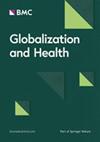空气污染造成的心血管疾病负担:系统回顾
IF 4.5
2区 医学
Q1 PUBLIC, ENVIRONMENTAL & OCCUPATIONAL HEALTH
引用次数: 0
摘要
据估计,心血管疾病(CVD)是导致全球死亡的主要原因。空气污染是全球公共健康面临的最大环境威胁。空气污染被认为是心血管疾病潜在的可改变的环境风险因素,因为它可以通过采取正确的国家和国际政策来预防。本研究旨在综合现有关于空气污染导致心血管疾病负担的研究结果,即发病率、住院率、残疾率、死亡率和成本特征。本研究在 Scopus、PubMed 和 Web of Science 数据库中进行了系统检索,以确定截至 2023 年 6 月 13 日的无时间限制的研究。排除标准包括产前暴露、室内空气污染暴露、综述研究、会议、书籍、致编辑的信以及动物和实验室研究。文章的质量根据医疗保健研究与质量机构评估表、纽卡斯尔-渥太华量表和德拉蒙德标准进行评估,采用的是自制的量表。达到 A 类和 B 类标准的文章被纳入研究范围。在获得的 566 项研究中,根据纳入/排除标准,有 92 项研究被界定为符合本系统综述的要求。这些调查结果表明,长期暴露于各种浓度的空气污染物,会增加心血管疾病的发病率、住院率、残疾率、死亡率和成本,即使在相对较低的水平上也是如此。调查结果显示,与高血压密切相关的主要污染物是 PM2.5。此外,与 2014 年相比,2016-2019 年期间与中风有关的全球残疾调整寿命年数增加了 1.8 倍,2023 年与心血管疾病有关的住院治疗增加了 8.5 倍。环境空气污染是造成心血管疾病负担和公共卫生成本的一个被低估但可改变的重要因素。这不仅是一个环境问题,也是心血管疾病病例和死亡率大幅增加的重要风险因素。系统综述的研究结果强调了在公共卫生部门采取更多预防措施的机会,以减少心血管疾病在人类社会中的足迹。本文章由计算机程序翻译,如有差异,请以英文原文为准。
Burden of cardiovascular disease attributed to air pollution: a systematic review
Cardiovascular diseases (CVDs) are estimated to be the leading cause of global death. Air pollution is the biggest environmental threat to public health worldwide. It is considered a potentially modifiable environmental risk factor for CVDs because it can be prevented by adopting the right national and international policies. The present study was conducted to synthesize the results of existing studies on the burden of CVDs attributed to air pollution, namely prevalence, hospitalization, disability, mortality, and cost characteristics. A systematic search was performed in the Scopus, PubMed, and Web of Science databases to identify studies, without time limitations, up to June 13, 2023. Exclusion criteria included prenatal exposure, exposure to indoor air pollution, review studies, conferences, books, letters to editors, and animal and laboratory studies. The quality of the articles was evaluated based on the Agency for Healthcare Research and Quality Assessment Form, the Newcastle–Ottawa Scale, and Drummond Criteria using a self-established scale. The articles that achieved categories A and B were included in the study. Of the 566 studies obtained, based on the inclusion/exclusion criteria, 92 studies were defined as eligible in the present systematic review. The results of these investigations supported that chronic exposure to various concentrations of air pollutants, increased the prevalence, hospitalization, disability, mortality, and costs of CVDs attributed to air pollution, even at relatively low levels. According to the results, the main pollutant investigated closely associated with hypertension was PM2.5. Furthermore, the global DALY related to stroke during 2016–2019 has increased by 1.8 times and hospitalization related to CVDs in 2023 has increased by 8.5 times compared to 2014. Ambient air pollution is an underestimated but significant and modifiable contributor to CVDs burden and public health costs. This should not only be considered an environmental problem but also as an important risk factor for a significant increase in CVD cases and mortality. The findings of the systematic review highlighted the opportunity to apply more preventive measures in the public health sector to reduce the footprint of CVDs in human society.
求助全文
通过发布文献求助,成功后即可免费获取论文全文。
去求助
来源期刊

Globalization and Health
PUBLIC, ENVIRONMENTAL & OCCUPATIONAL HEALTH-
CiteScore
18.40
自引率
1.90%
发文量
93
期刊介绍:
"Globalization and Health" is a pioneering transdisciplinary journal dedicated to situating public health and well-being within the dynamic forces of global development. The journal is committed to publishing high-quality, original research that explores the impact of globalization processes on global public health. This includes examining how globalization influences health systems and the social, economic, commercial, and political determinants of health.
The journal welcomes contributions from various disciplines, including policy, health systems, political economy, international relations, and community perspectives. While single-country studies are accepted, they must emphasize global/globalization mechanisms and their relevance to global-level policy discourse and decision-making.
 求助内容:
求助内容: 应助结果提醒方式:
应助结果提醒方式:


